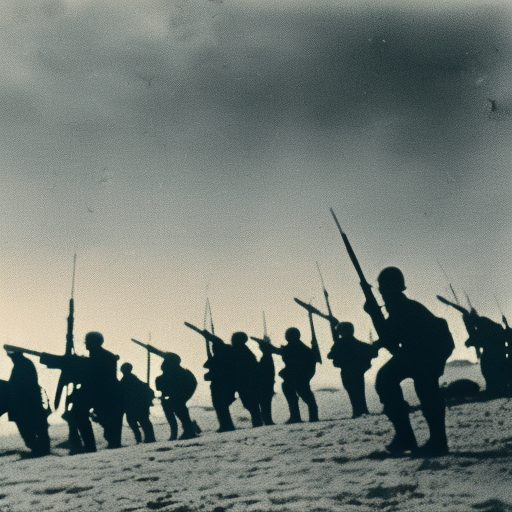Battle of Vigo Bay: A Decisive Naval Engagement in the War of the Spanish Succession
The Battle of Vigo Bay, which took place on October 23, 1702, was a significant naval engagement during the War of the Spanish Succession. It involved a combined Anglo-Dutch fleet led by Admiral Sir George Rooke and a Franco-Spanish fleet commanded by Admiral Château-Renault. The battle resulted in a resounding victory for the Anglo-Dutch forces, securing their control over the important Spanish port of Vigo and dealing a severe blow to the Franco-Spanish alliance.
The Context: War of the Spanish Succession
The War of the Spanish Succession erupted in 1701 following the death of the Spanish king, Charles II. The conflict arose due to competing claims to the Spanish throne and the fear of one power gaining dominance over Europe. England, the Dutch Republic, and other European powers formed the Grand Alliance to prevent the union of the Spanish and French crowns under the Bourbon dynasty. France, on the other hand, sought to secure the Spanish inheritance for Philip of Anjou, a Bourbon prince.
The Anglo-Dutch Plan
In 1702, the Anglo-Dutch fleet, under the command of Admiral Rooke, devised a plan to attack the Spanish port of Cádiz. However, due to a combination of adverse weather conditions and logistical challenges, the operation was called off. Rooke then set his sights on the nearby port of Vigo, which was known to be a gathering point for the French and Spanish fleets.
The Battle
On October 23, the Anglo-Dutch fleet arrived at Vigo Bay, where they encountered the combined Franco-Spanish fleet. The Franco-Spanish forces were caught off guard and ill-prepared for a battle. The Anglo-Dutch fleet quickly launched a series of coordinated attacks, overpowering the enemy and inflicting heavy damage on their ships. The French flagship, the Thérèse, was captured, and several other vessels were either sunk or set ablaze.
The Capture of the Spanish Treasure Fleet
One of the main objectives of the Anglo-Dutch fleet was to seize the Spanish treasure fleet, which was believed to be harbored in Vigo Bay. The treasure fleet consisted of numerous ships laden with gold, silver, and other valuable goods from the Spanish colonies in the Americas. To their delight, the attackers discovered that the treasure fleet was indeed present in the bay. The Anglo-Dutch forces quickly set about capturing the treasure-laden ships, securing an immense fortune.
The Aftermath
The Battle of Vigo Bay was a resounding victory for the Anglo-Dutch fleet. Not only did they successfully capture the Spanish treasure fleet, but they also dealt a severe blow to the Franco-Spanish alliance. The defeat at Vigo Bay weakened the French navy and disrupted their plans to support their forces in Spain. It also undermined the Spanish monarchy’s ability to finance their war efforts.
Legacy
The Battle of Vigo Bay had significant implications for the outcome of the War of the Spanish Succession. The captured treasure provided a much-needed financial boost for the Grand Alliance, enabling them to continue their military campaigns. The victory also boosted the morale of the Anglo-Dutch forces and demonstrated their naval superiority. However, the war would continue for several more years before a final resolution was reached.
In conclusion, the Battle of Vigo Bay was a decisive naval engagement during the War of the Spanish Succession. The Anglo-Dutch fleet, led by Admiral Rooke, achieved a resounding victory over the Franco-Spanish forces, capturing the Spanish treasure fleet and dealing a severe blow to the enemy. This battle had significant implications for the outcome of the war and demonstrated the naval prowess of the Anglo-Dutch alliance.












